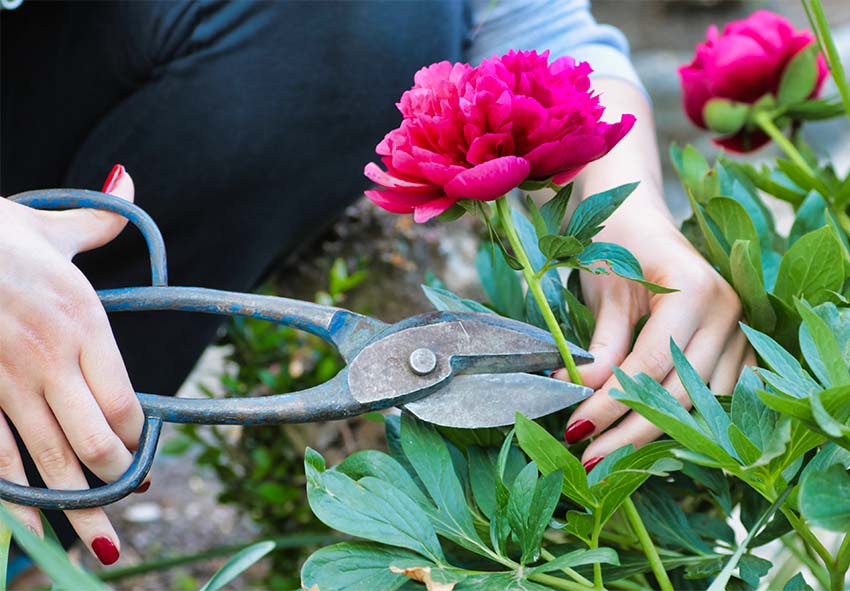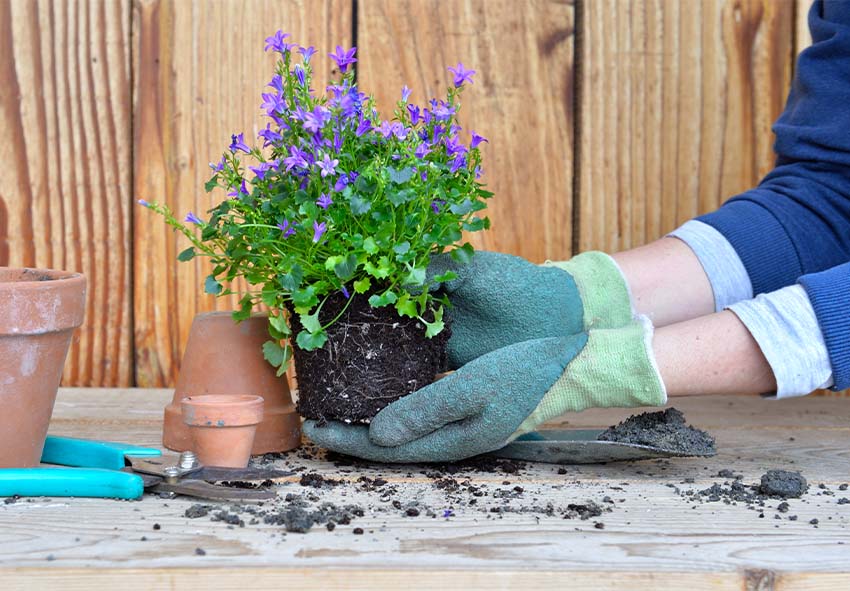Winterizing perennials is a crucial step in protecting your garden through the cold months. By taking the time to insulate and prepare your plants for winter, you set the foundation for a healthier, more vibrant garden come spring. This guide covers essential winter care practices, including mulching, pruning, covering, and general plant protection. Our gardening blog is a perfect place to find all the information you need!
Understanding the Basics of Winterizing Perennials
Winterizing helps shield perennials from harsh temperatures, fluctuating moisture levels, and frost damage. Cold weather can cause the soil to freeze and thaw, which may damage roots or push shallow-rooted plants out of the ground. Understanding the unique needs of each type of perennial can help ensure they emerge strong and healthy in spring.
Preparing Perennials for Winter
Winterizing perennials starts with understanding each plant’s unique needs. While some perennials are naturally hardy, others may require extra care to survive colder months. Factors like plant type, hardiness zone, and specific cold-weather vulnerabilities determine the level of winter protection needed. By identifying which perennials in your garden benefit from winter preparation, you can take timely steps to protect them, ensuring they stay healthy and ready to flourish in spring.
Identifying Perennials That Need Winter Protection
Not all perennials need extensive winterizing, but certain types benefit greatly from added protection. Here are the main factors:
- Consider USDA Hardiness Zones: Review each plant’s hardiness rating to determine if it can tolerate winter temperatures in your zone. Plants on the edge of their hardiness range may need extra protection.
- Look for Tender or Semi-Hardy Varieties: Perennials like rosemary, lavender, and salvia often need added insulation, especially in colder regions, as they are more susceptible to frost damage.
- Evaluate Young or Recently Planted Perennials:Newer perennials are more vulnerable to extreme temperatures because their root systems are not yet well-established. Adding mulch and protective coverings helps them survive their first winter.
- Identify Late-Summer or Fall Planted Perennials: Late plantings may not have had sufficient time to root fully before winter, making them more susceptible to frost heave and freezing. These plants often need extra mulch or burlap coverings.
Timing the Winterization Process
Timing is key to successful winterizing. Starting too early can trap excess moisture, which may lead to rot. For best results, begin winterizing after the first frost, when the plants have already begun to go dormant. In colder zones, this typically means late fall, while in warmer zones, early winter may be suitable.
Pruning and Cutting Back Perennials
Pruning perennials in fall or early winter is a key part of winterizing, but it’s important to know which plants to trim and which to leave uncut. Just like autumn garden cleanup, proper pruning can prevent disease and maintain plant health, while certain plants left intact can support wildlife and add winter interest. Understanding the timing and techniques of cutting back ensures that you prepare each perennial for a strong start in spring, while also preserving the garden’s winter beauty.
Knowing Which Perennials to Prune
Some perennials benefit from fall pruning, while others are best left alone until spring. Plants like daylilies and peonies can be cut back after they’ve naturally died back in the fall, which helps reduce disease risk. Other perennials, such as ornamental grasses and coneflowers, add winter interest and provide seeds for wildlife, so leaving them uncut until spring can be beneficial.
Pruning Techniques for Winterizing
Using these techniques helps prepare your perennials for the colder months, promoting healthy regrowth when spring arrives:
- Cut Back Deciduous Perennials: Trim back plants like daylilies, peonies, and hostas to about 2–3 inches above the ground. Removing spent foliage helps prevent pests and diseases from overwintering.
- Leave Ornamental Grasses Uncut: Avoid cutting back ornamental grasses until early spring. Their tall, textured foliage adds winter interest and provides shelter for wildlife.
- Trim Herbaceous Perennials Conservatively: For plants like coneflowers and black-eyed Susans, only remove faded flowers or damaged stems. The remaining seed heads provide food for birds during winter.
- Use Clean, Sharp Tools: Ensure pruning shears are sharp and disinfected to prevent the spread of diseases. Clean tools make cleaner cuts that are less likely to damage plants.
- Avoid Over-Pruning Tender Perennials: For less hardy perennials, like lavender, avoid heavy pruning, as too much trimming exposes them to cold damage. A light shaping is often enough to prepare them for winter.
- Dispose of Removed Foliage Properly: Place pruned material in a compost pile or dispose of it to keep the garden clean. Avoid leaving debris around the base of plants, as it can attract pests and promote rot.
Applying Mulch to Insulate Perennials
Mulching provides an essential layer of protection for perennials during winter. By insulating the soil, mulch helps to regulate temperature fluctuations, retain moisture, and protect roots from extreme cold. The type and application of mulch can vary based on your climate and plant types, but a well-applied layer of mulch ensures that your perennials have the support they need to survive winter stresses and emerge thriving when temperatures warm up.
Types of Mulch for Winter Protection
Choosing the right mulch for winter is crucial for effective insulation. Straw, shredded leaves, and bark mulch are among the best options as they provide insulation without compacting too heavily. Consider your climate and plant type; for instance, straw is excellent for protecting tender herbs like lavender, while bark mulch can be suitable for tougher perennials.
Proper Mulching Techniques
Following these mulching techniques supports perennial health by providing insulation, moisture retention, and soil enrichment:
- Choose the Right Mulch Type: Use materials like shredded leaves, straw, or bark mulch for winter protection. Organic mulches decompose over time, enriching the soil and insulating plants against temperature fluctuations.
- Apply a 2–4 Inch Layer: Spread mulch around 2 to 4 inches deep over the soil. This thickness provides adequate insulation without suffocating the plants, helping to regulate soil temperature and retain moisture.
- Leave Space Around Plant Crowns: Avoid piling mulch directly against the crown or stems, as this can lead to rot. Leave a small gap (about 1–2 inches) around the base to allow for airflow and prevent moisture buildup.
- Refresh Mulch Annually: Replenish mulch each fall to maintain proper depth and insulation, especially if it has broken down or thinned. This ensures plants have consistent protection throughout the winter months.
- Mulch After the First Hard Frost: Wait until after the first hard frost to apply mulch. This timing helps lock in cold temperatures, preventing premature growth and protecting plants during winter dormancy.
Winter Care for Container Perennials
Container perennials require extra winter care, as their roots are more exposed to cold temperatures than in-ground plants. Ensuring proper protection and a stable environment for these plants is key to helping them survive the winter months.
Protecting Container Plants from Freezing
Perennials in containers face unique challenges, as pots freeze more quickly than the ground. Move container plants into sheltered areas or place them indoors to protect against freezing. For containers left outdoors, insulate by wrapping pots in burlap or bubble wrap. Grouping pots together against a south-facing wall can also reduce cold exposure.
Watering and Soil Care for Container Perennials
Water container plants sparingly over winter, as too much moisture can cause roots to freeze. Check soil moisture periodically and add water only if the soil is dry to the touch. Refresh soil by adding compost or a slow-release fertilizer in early winter to provide nutrients and encourage healthy spring growth. Ensure drainage holes are clear to prevent standing water that could freeze and damage roots.
Maintaining Soil Health Over Winter
Winter is an excellent time to nurture soil health in preparation for spring. With the right amendments, you can enrich your soil, making it more conducive to perennial growth and resilience in the upcoming season.
Amending Soil for Spring Growth
Adding organic matter like compost or leaf mulch in the fall improves soil structure and fertility by spring. Spread a layer of compost or organic material over garden beds, gently incorporating it into the topsoil without disturbing perennial roots. This slow-release nutrient boost encourages strong growth when plants wake up in the spring.
Testing and Adjusting Soil pH
Testing soil pH before winter allows you to make adjustments that will take effect by spring. Acid-loving perennials benefit from soil pH adjustments with sulfur, while lime can raise pH for perennials preferring neutral or slightly alkaline soil. Apply amendments carefully, following instructions to avoid disturbing established plants.
Covering Perennials for Frost and Cold Protection
Protecting perennials from frost and severe cold can be crucial for delicate plants in harsher climates. Winter covers help insulate plants, shielding them from extreme temperatures, wind, and ice. Choosing the right materials and correctly covering perennials ensures they remain protected and healthy throughout the season.
Choosing the Right Winter Covers
These cover options allow you to choose the best materials based on your perennials’ needs and local climate, helping to safeguard plants against harsh winter conditions:
- Burlap: Burlap is a breathable and durable material that provides insulation while allowing air circulation. It’s ideal for wrapping around shrubs or covering perennials susceptible to frost damage.
- Frost Blankets or Fabric Covers: Lightweight frost blankets provide a barrier against cold temperatures without causing overheating. Use them for perennials that need temporary protection during unexpected cold snaps.
- Cloche Covers: Cloche covers (plastic or glass domes) are ideal for individual plants or small perennials. They trap warmth and protect plants from frost, wind, and ice, making them a good choice for sensitive or young plants.
- Mulch Covers for Low-Growing Perennials: For ground-level or low-growing perennials, a thick layer of straw or shredded leaves can act as a natural cover, protecting plants from frost. Cover lightly to ensure air can still circulate.
- Plastic Sheeting for Emergency Use: Plastic sheeting or tarps can provide short-term frost protection in extreme conditions. However, ensure it does not touch the plant directly, as plastic can trap moisture, leading to rot. Use stakes or supports to hold it above the foliage.
How to Properly Cover Perennials
To effectively cover perennials, gently wrap or drape the protective material over the plant, allowing it to reach the ground to trap warmth. Secure covers with stakes or ties, especially in windy areas. Leave some airflow to avoid moisture buildup, which can lead to rot. Covering plants at night and removing covers during milder days can prevent overheating and maintain healthy airflow.
Conclusion
Proper winterization of perennials is key to helping your plants weather the cold season and come back strong in spring. With the right care—covering, mulching, pruning, and maintaining soil health—your perennials will be primed to flourish. As you prepare for winter, explore protective covers, mulches, and other winter care products available in our online store to keep your perennials healthy all season long.
Frequently Asked Questions (FAQs) about Winterizing Perennials
1. Why is winterizing perennials important for their health?
Winterizing helps protect perennials from harsh weather, frost, and freezing, which can damage roots and stems. By taking steps like mulching, pruning, and covering, you insulate plants against extreme cold, preserving their strength for regrowth. Proper winter care ultimately promotes healthier blooms and foliage in spring.
2. When should I start winterizing my perennials?
Begin winterizing after the first hard frost, once plants have naturally begun to go dormant. Starting too early can interrupt their life cycle, while waiting too late may leave them vulnerable to sudden freezes. The exact timing depends on your climate, but generally, late fall is best.
3. Which perennials need the most winter protection?
Tender perennials, such as rosemary, lavender, and some ornamental grasses, benefit most from winterizing. These plants are often less cold-hardy and may need extra insulation, like mulching or covering. In colder climates, even hardy perennials may need some protection for optimal spring regrowth.
4. What perennials can I find in your online store?
Our online store Dutch-bulbs.com offers a wide variety of perennials, including popular options like lavender, hostas, daylilies and peonies. We also carry unique and seasonal varieties to suit various garden styles and climates. Browse our selection for top-quality, healthy plants perfect for your garden!
5. What type of winter cover is best for delicate perennials?
Delicate perennials benefit from breathable materials like burlap or frost blankets, which insulate without trapping moisture. For small, individual plants, cloche covers work well, while mulch layers are ideal for low-growing varieties. Choose covers suited to your climate, and secure them to prevent shifting in wind or snow.
Published: 05.11.2024




